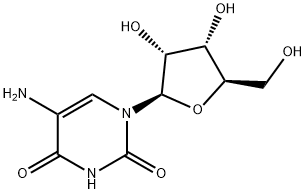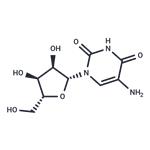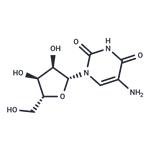Description
5-Aminouridine can modify nucleobases and can be incorporated into the target DNA. 5-Aminouridine exhibits a wide range of biological activity and it inhibits the growth of tumors, fungi and viruses.
in vitro
This modified nucleobase, 5-Aminouridine, must exhibit a low enough potential to be oxidized by Os(bpy)3
3+. These modified nucleobases can be inserted into the target DNA by direct synthesis using modified phosphoramidites
in vivo
5-Aminouridine inhibits the incorporation of carbamyl aspartate into pyrimidines of both RNA and DNA in rat lived and [32P]phosphate into phospholipids and RNA nucleotides of rat liver slices and hepatoma. 5-Aminouridine was found to be incorporated into the RNA of Ehrlich ascites cells, and 5-aminouridine monophosphate was shown to be a strong inhibitor of orotidine 5'-phosphate decarboxylase[1].
References
[1] David A. Smith, Donald W. Visser, P. Roy-Burman. “Studies on 5-aminouridine.” Biochimica et Biophysica Acta (BBA) - Nucleic Acids and Protein Synthesis 119 2 (1966): Pages 221-228.


